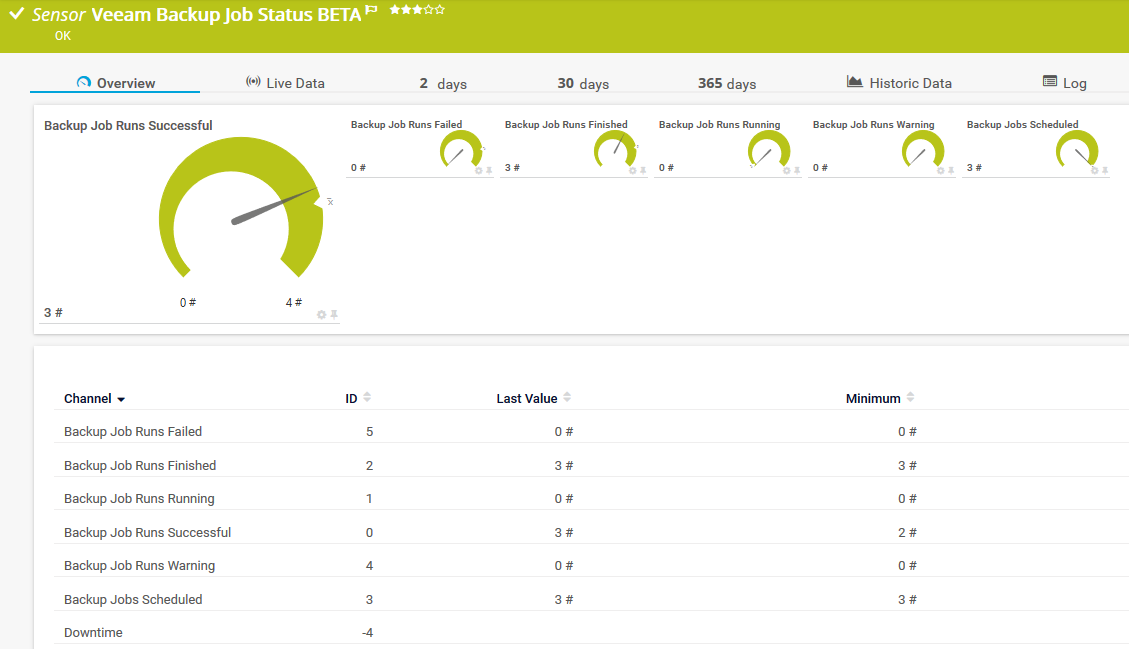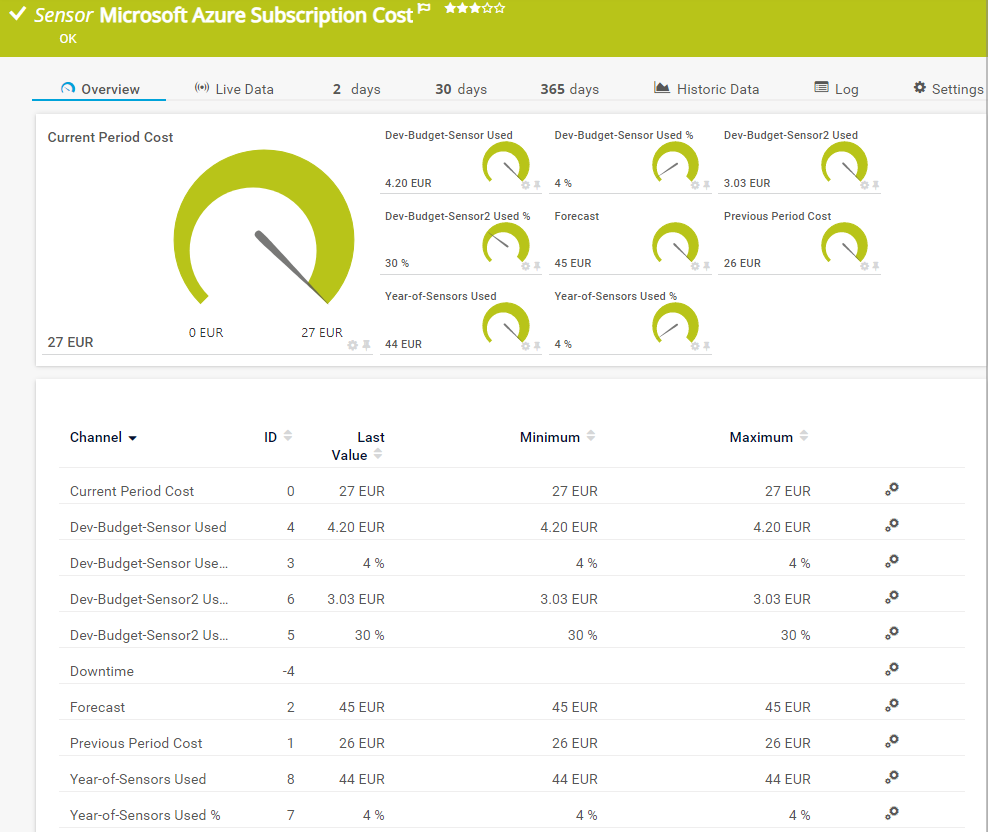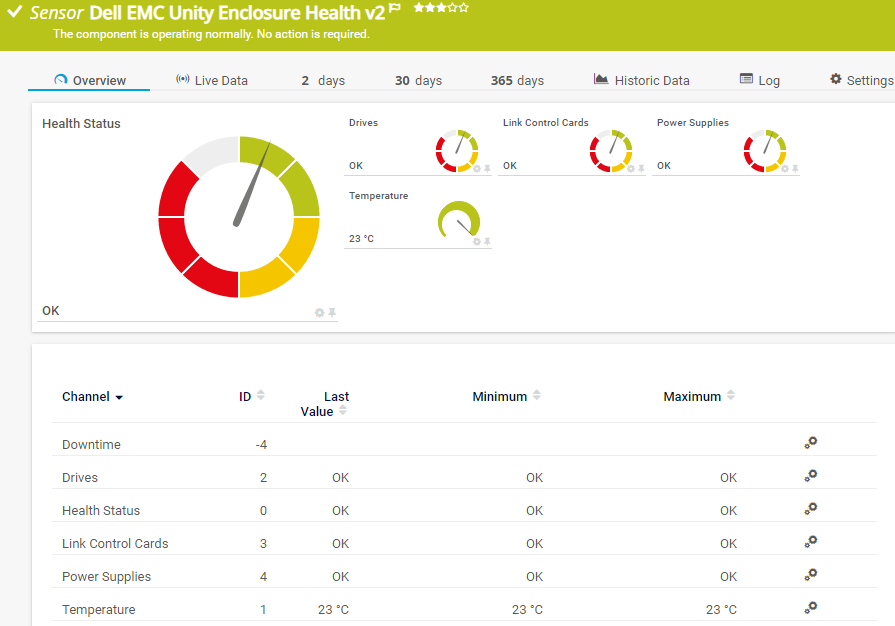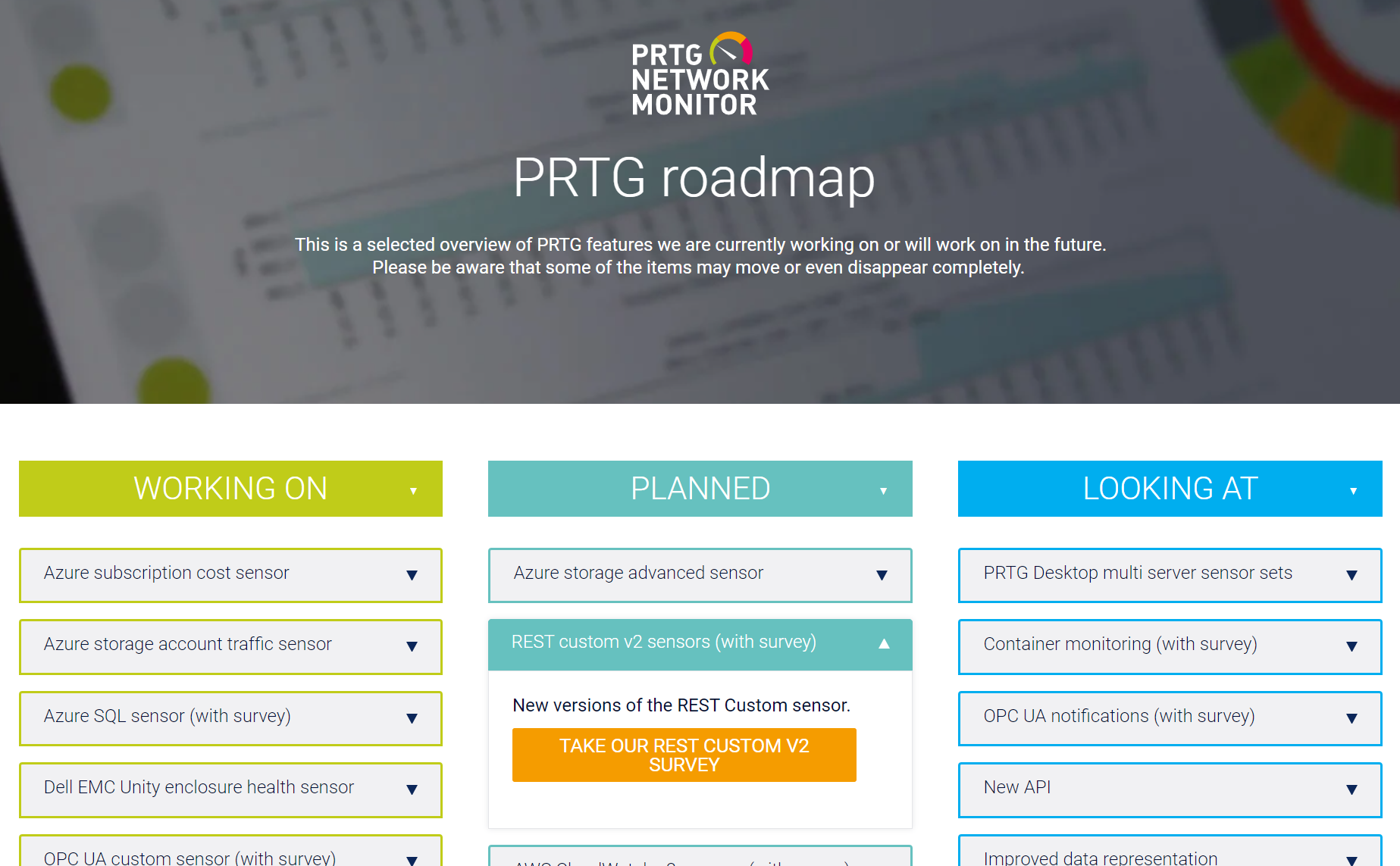PRTG Network Monitor release 20.4.64 is our 10th scheduled version this year, and it includes a lot of great stuff! PRTG 20.4.64 comes with three new sensor types, including the first one for Veeam, major improvements for our already delivered IoT sensors, some fixes and a bunch of other improvements. In more detail, you can be excited about our first native Veeam sensor that monitors the status of backup jobs, the Microsoft Azure Subscription Cost sensor, and the Dell EMC Unity Enclosure Health v2 sensor. So let's have a closer look into the new features.
NEW: Veeam Backup Job Status sensor
Our first native sensor for Veeam monitoring has arrived! The Veeam Backup Job Status sensor monitors the status of all backup job runs on the Veeam Backup Enterprise Manager in the last 24 hours. It shows the number of successful and failed job runs, running and finished job runs, job runs in warning states, and scheduled backup jobs. This sensor gives a general overview of the status of backup jobs so that you can see the jobs which need your immediate attention at a glance.

But that' s not the end of the story! For the next release we already plan to release an advanced version of the sensor. 😊
NEW: Microsoft Azure Subscription Cost sensor
After the Microsoft Azure Virtual Machine sensor we released with PRTG version 20.4.63, this is our second sensor type for Azure. The Microsoft Azure Subscription Cost sensor monitors the cost in a Microsoft Azure subscription so that you can keep track of the overall expenses of your subscription. It shows the current and previous period cost, the cost forecast, user budgets, and the most expensive service by category.

NEW: Dell EMC Unity Enclosure Health v2 sensor
As promised in earlier articles, we proudly present you our latest new sensor of the new Dell EMC Unity sensor family. The Dell EMC Unity Enclosure Health v2 sensor monitors the health of a disk-array enclosure (DAE) or a physical or virtual disk processor enclosure (DPE) on a Dell EMC storage system. It shows the health status and, depending on the target device, temperatures as well as the status of cooling modules, drives, storage processors, power supplies, and link control cards. This sensor will help you to ensure your Dell EMC Unity enclosure is always working as expected.

Improvements for our IoT sensors
We implemented several improvements for our already existing IoT sensors, also based on your very valuable feedback.
For our Modbus TCP Custom sensor we improved the usage of the sensor settings, adjusted the sensor logs and updated help texts and documentation. Our OPC UA Server Status sensor can now monitor session-related metrics if diagnostics data is activated on the server, so that PRTG can notify you if there are too many ongoing sessions or the amount of timeout sessions increases.
We added support for authentication with username and password, as well as allowing you to use encryption and provide a certificate to authenticate the sensor against the OPC UA server.
We improved the general performance of OPC UA sensors in this version by minimizing their network communication.
Finally our MQTT Round Trip sensor, MQTT Statistics sensor, and MQTT Subscribe Custom sensor can now be added to device templates to automatically create the sensors via auto-discovery.
Plus some more changes and fixes
Aside from that, we also fixed 40 bugs, implemented 19 feature and story tickets, and finished 49 tasks and to-dos with PRTG release 20.4.64. Find all the details on our release notes page.
Check out the November 2020 update of our public roadmap
We also offer a public roadmap of PRTG on our website and we update it quite regularly. There you can read at any time which features we are currently working on and what kind of things we want to implement in PRTG in the future.
We are currently working on a lot of new sensors and other features. I am especially excited about the new Azure sensors and the OPC sensors for IIoT. But also the new PRTG configuration viewer will be awesome!
Behind some pull-down boxes there are also surveys where you can contribute your knowledge and wishes for new sensors – for example look behind the scenes of the REST custom v2 sensor in the "Planned" column. :)
 Published by
Published by 








